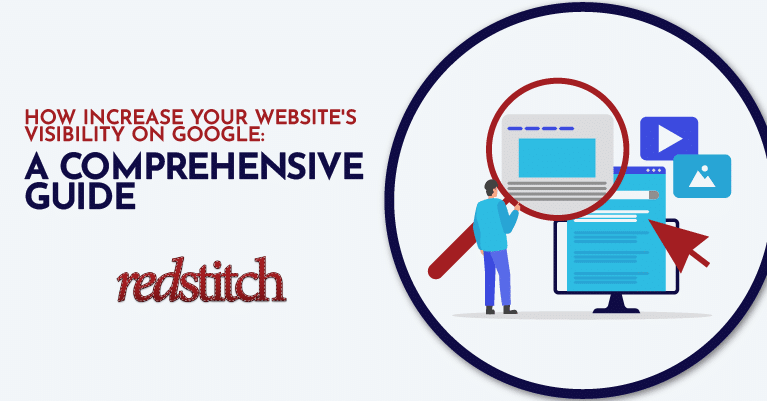In today’s digital landscape, a strong online presence is crucial for businesses to thrive, and being easily discoverable on Google is a key factor in that success. This comprehensive guide is designed to help business owners, marketing managers, and professionals enhance their website’s visibility on Google and improve search engine rankings, ultimately leading to increased brand awareness, customer acquisition, and overall business growth. Whether you’re just starting with search engine optimization (SEO) or looking to refine your strategy, this guide covers everything from keyword research and website performance to local SEO and staying up-to-date with Google algorithm updates. So, let’s dive in and start making your website more visible on Google!
Importance of Website Visibility on Google
Website visibility on Google plays a crucial role in the success of any business in today’s digital age. A strong online presence directly impacts brand awareness, as potential customers are more likely to discover and engage with your business if it appears in their search results. In turn, this increased visibility on Google influences customer acquisition, as users are more likely to visit your website and potentially convert into paying customers.
Moreover, an improved Google search ranking contributes to overall business growth by driving more organic traffic to your website. This traffic often translates into higher lead generation, better conversion rates, and increased revenue. Thus, optimizing your website for visibility on Google is essential for businesses looking to establish themselves in the competitive digital landscape.
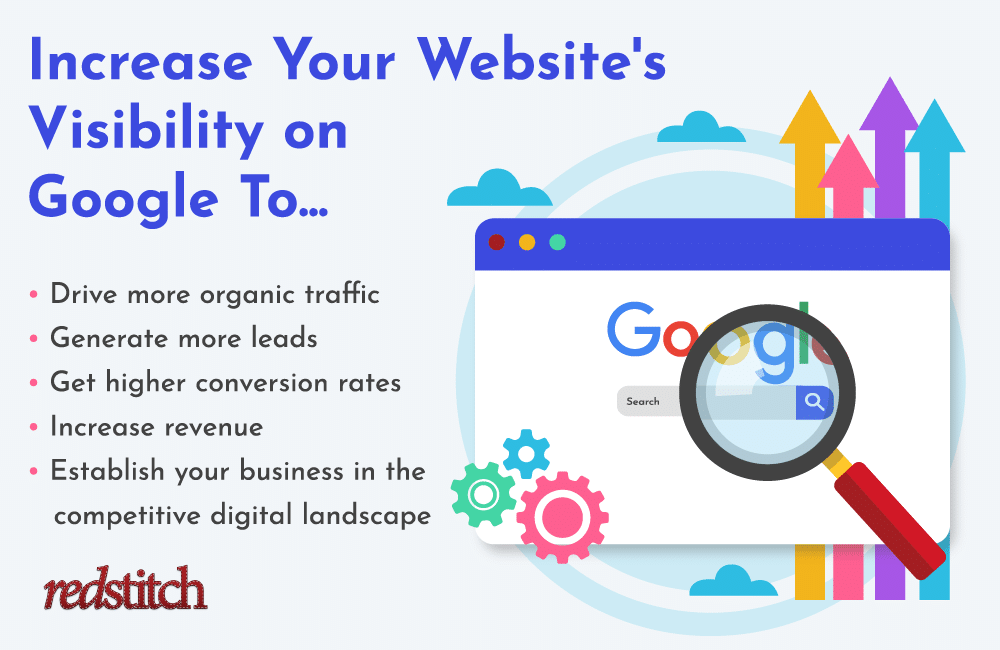
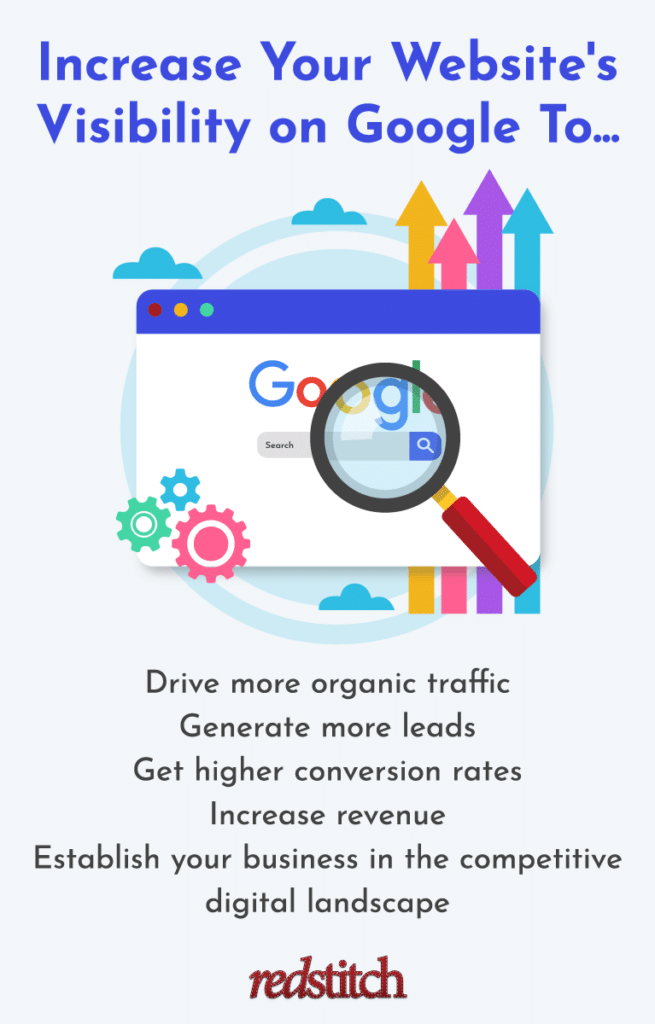
Basics of Google Search Engine Optimization (SEO)
Search engine optimization (SEO) is the process of improving your website’s visibility and ranking in search engine results pages such as Google, Bing, Yahoo!, etc. It consists of three primary components: on-page SEO, off-page SEO, and technical SEO.
On-Page SEO
On-page SEO refers to optimizing individual web pages, including their content and HTML source code, to rank higher and earn more relevant traffic in search engine results. This process involves strategically incorporating keywords, creating high-quality content, and optimizing meta tags, among other tactics.
Off-Page SEO
Off-page SEO, on the other hand, focuses on building your website’s reputation and authority through external factors such as backlinks, social media promotion, and influencer collaborations. A strong off-page SEO strategy can significantly improve your website’s credibility, which in turn can lead to higher search rankings.
Technical SEO
Technical SEO encompasses the behind-the-scenes aspects of optimizing a website for search engines. This includes ensuring that your website is mobile-friendly, has a fast loading speed, uses structured data and schema markup, and implements canonical URLs and 301 redirects. By addressing technical SEO issues, you enhance the user experience and make it easier for search engines to crawl, index, and understand your website.
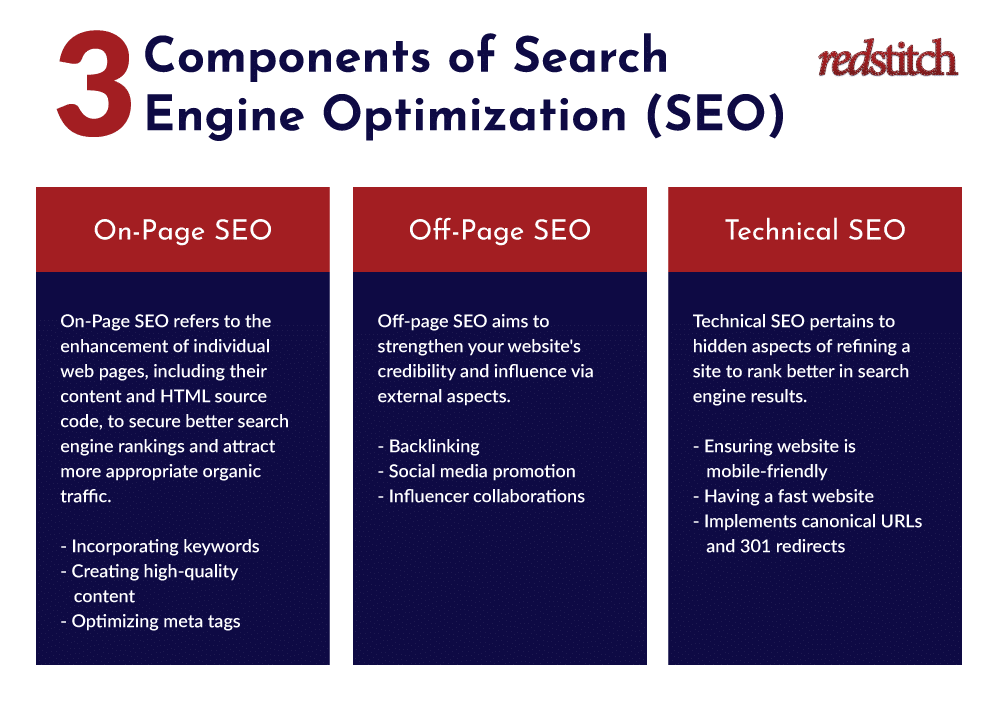
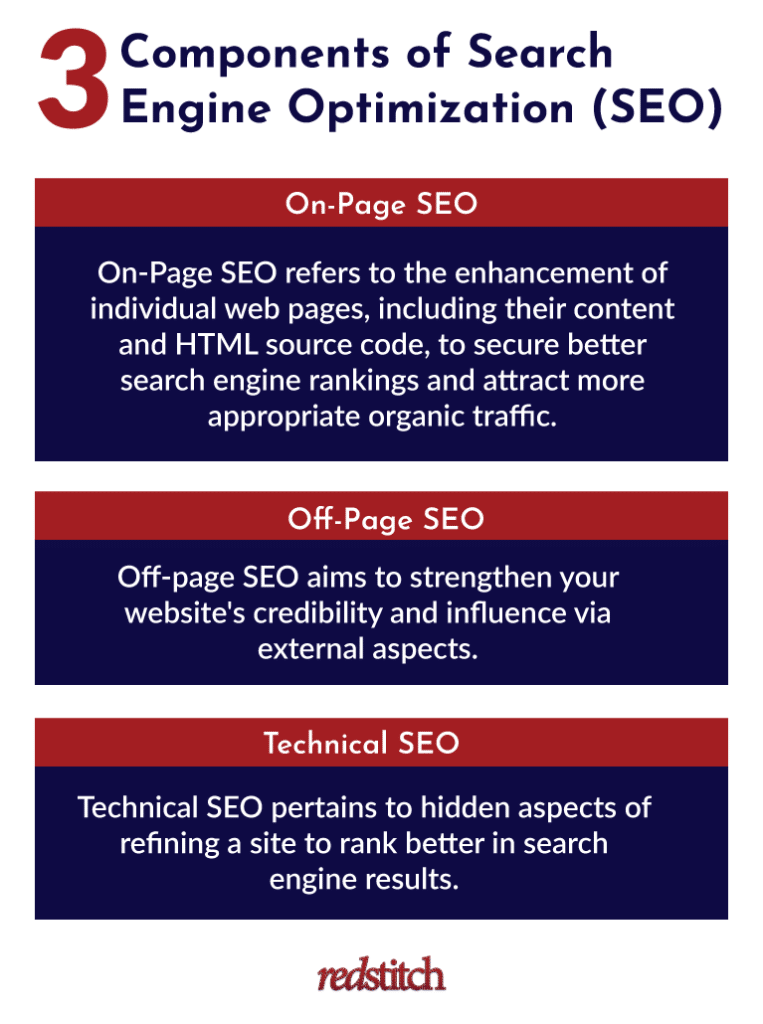
Keyword Research and Optimization
Keyword research is a vital aspect of Google search engine optimization, as it helps identify the most relevant and high-traffic keywords for your website. This process involves analyzing the search terms that your potential customers are using to find products or services similar to yours. By targeting these terms, you can better tailor your content to meet the needs of your audience, leading to improved search engine rankings and visibility.
To optimize your website for these keywords, you should incorporate them naturally into your content, titles, headings, and meta descriptions. Focus on creating engaging and informative content that provides value to your audience while still including the targeted keywords. This will help Google understand the context of your website and rank it accordingly for relevant searches.
In addition to short, high-competition keywords, consider utilizing long-tail keywords in your content strategy. Long-tail keywords are longer, more specific phrases that have lower search volume but can drive targeted and high-converting traffic to your site. By incorporating a mix of short and long-tail keywords, you can improve your website’s chances of ranking for a wider variety of search terms and attracting a diverse audience.
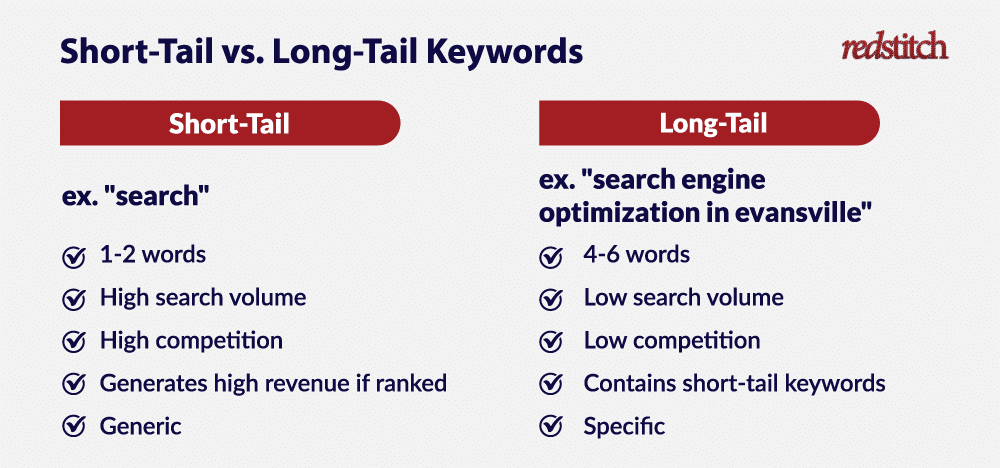
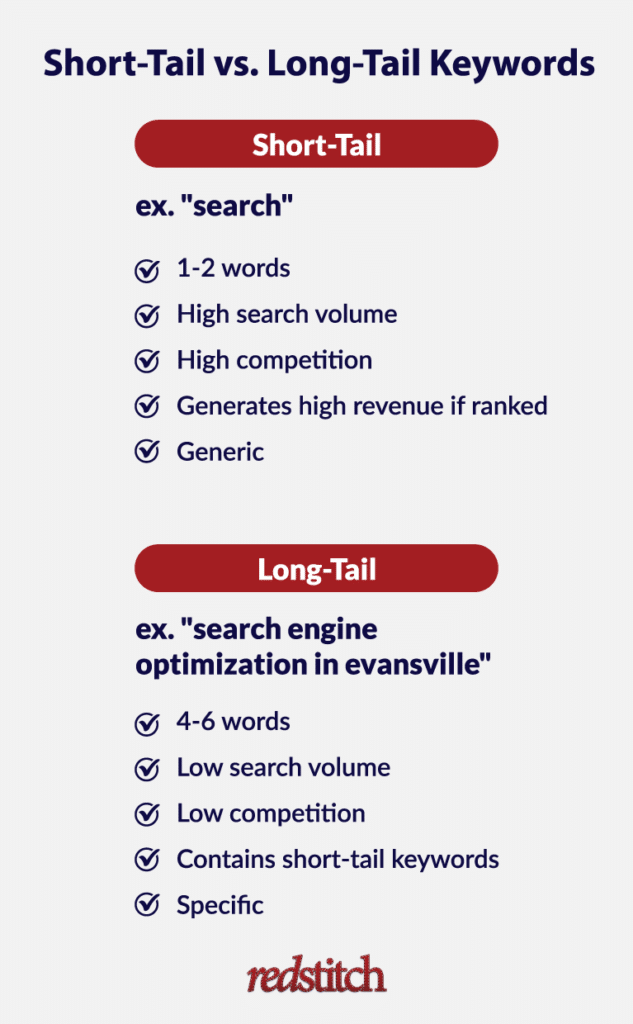
Improving Website Performance
A crucial aspect of making your website more visible on Google is ensuring optimal website performance. This includes focusing on site speed, mobile optimization, and user experience (UX) to deliver a seamless browsing experience to your visitors.
Site speed plays a significant role in website visibility, as Google considers fast-loading websites to be more user-friendly. To improve site speed, consider compressing images, optimizing code, and leveraging browser caching. A faster website not only boosts search engine rankings but also enhances user engagement and reduces bounce rates.
Mobile optimization is another vital component of website performance, as the majority of online users access websites through their mobile devices. Ensure that your website is responsive, adapts to various screen sizes, and offers a seamless experience across devices. Mobile-friendliness is a ranking factor in Google’s algorithm, making it essential to prioritize.
User experience (UX) and site navigation are also critical to improving website performance. A well-structured website with clear navigation and an intuitive layout helps visitors find the information they need quickly and easily. Focus on creating a user-friendly design, using descriptive headings, and organizing content logically. This not only helps users but also makes it easier for Google to crawl and index your website, contributing to better visibility on search engine results pages.
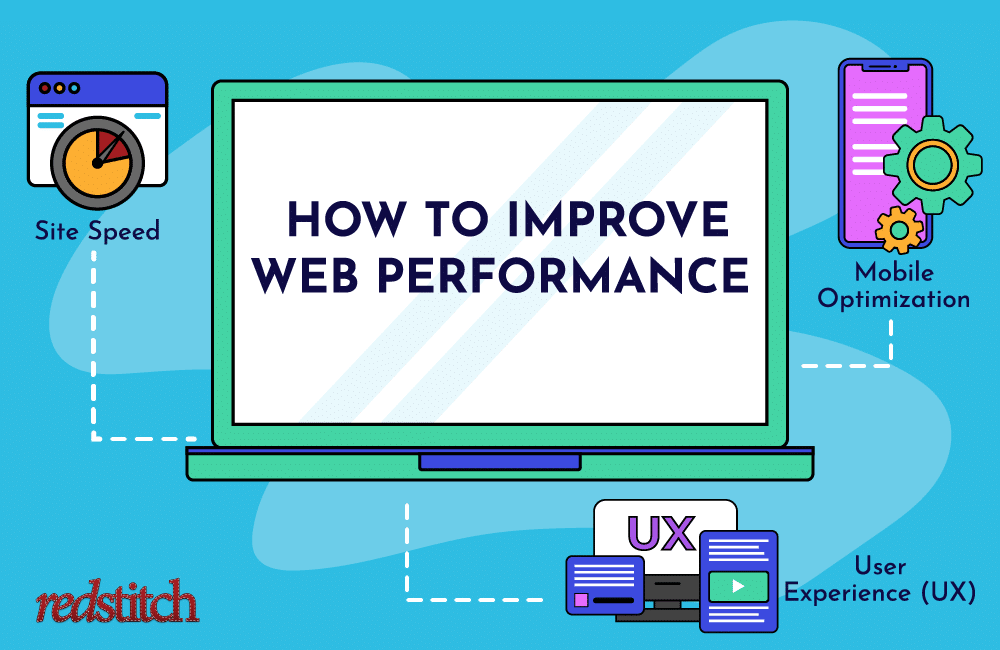
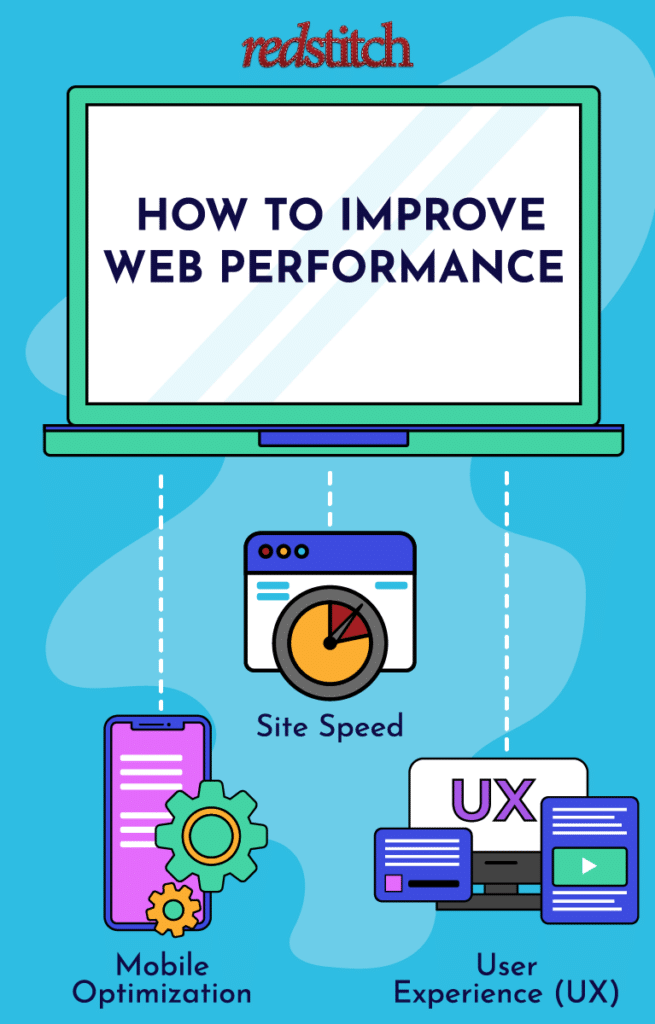
Creating High-Quality Content
High-quality content is the backbone of a successful SEO strategy. Fresh, high-quality content helps to capture the attention of potential visitors and encourages them to engage with your website. To create content that resonates with your target audience, focus on providing valuable information that addresses their needs, questions, and pain points.
Blogging and article writing should be an integral part of your content strategy. Regularly publishing well-researched, in-depth articles on topics relevant to your audience will improve your website’s visibility on Google. These pieces should incorporate your target keywords while maintaining a natural, engaging tone.
Visuals and multimedia elements can greatly enhance the appeal of your content. Videos, infographics, and images help to engage the audience visually while also providing an opportunity for additional keyword optimization. People are more likely to share visually appealing content, and this can lead to increased traffic and better search engine rankings.
Building External Links and Off-Page SEO
A crucial aspect of improving your website’s visibility on Google is building backlinks and implementing off-page SEO strategies. Backlinks, also known as inbound or incoming links, are links from other websites pointing to your site. These links signal to Google that your website is a valuable resource, thus increasing its authority and search engine ranking.
Guest posting is an effective method for obtaining backlinks. By contributing high-quality content to relevant and reputable websites in your industry, you can acquire valuable backlinks that boost your website’s authority. Make sure to include a link back to your site within the content or author bio to maximize the benefits of guest posting.
Influencer collaborations can also help in building backlinks and expanding your online reach. Partnering with influencers in your niche allows you to tap into their audience and gain credibility. In exchange for your product or service, influencers can create content that features your brand and includes a link back to your website.
Technical SEO Best Practices
Technical SEO is an essential aspect of optimizing your website for improved visibility on Google, as it ensures that search engines can crawl and index your website efficiently. One crucial element of technical SEO is implementing structured data and schema markup. Structured data helps search engines understand the context and content of your website, enabling them to display rich snippets in search results, which can lead to increased click-through rates.
Case Study : Using FAQ Schema to Increase Website Visibility
One of Redstitch’s clients is a diecast display case manufacturer based in Kentucky. The manufacturer produces high-quality cases for collectors to display their diecast collections. Despite having a functional and well-designed website, the manufacturer struggled to improve their visibility online. They faced competition online and had difficulty appearing on the first page of search engine results for relevant keywords.
Redstitch suggested the use of FAQ schema to improve the manufacturer’s website visibility. FAQ schema is a structured data markup format used by search engines to display FAQs related to a particular topic in search results. To use FAQ schema effectively, Redstitch identified several relevant long-tail keywords used by customers looking for diecast display cases, such as “do plastic containers have lids,” “why are display cases expensive,” and “where to buy plastic containers.”
Using these targeted keywords, Redstitch drafted several commonly asked questions about diecast display cases and their products. These questions addressed factors such as size, material, and customization options, and were designed to attract customers searching for specific information about diecast display cases. With the manufacturer’s input, Redstitch fine-tuned the questions to ensure they were informative and relevant to their customers. Using the questions and answers, Redstitch then implemented the FAQ schema onto the manufacturer’s website. By integrating the schema into the site’s code, the questions and answers were now structured in a way that search engines could easily recognize and display in search results.
On May 30th, we added new FAQ questions to enhance the manufacturer’s website.Over time, Redstitch monitored the website’s traffic and search engine ranking for the targeted keywords. The manufacturer’s website steadily began to appear higher in search results, and the impressions to their site increased by 123 impressions.
Thanks to the implementation of FAQ schema, the manufacturer’s website saw a significant increase in visibility online. The targeted keywords saw improvement in their search engine rankings, and the website began to appear on the first page of search results. The use of FAQ schema proved to be a successful strategy in improving the manufacturer’s online presence and attracting customers interested in their diecast display cases.

Technical SEO Best Practices Cont.
Another important component of technical SEO is creating and submitting an XML sitemap to Google. An XML sitemap provides a roadmap of your website’s structure, making it easier for search engines to discover and index your content. It is essential to keep your sitemap up-to-date and submit it to Google Search Console whenever you make significant changes to your site.
Canonical URLs and 301 redirects are also vital elements of technical SEO. Canonical URLs inform search engines about the preferred version of a web page when there are multiple versions available, preventing duplicate content issues. On the other hand, 301 redirects are used to redirect users and search engines from an old page to a new one, ensuring that any link equity and traffic from the old page are transferred to the new one. This practice is particularly important when you redesign your website or update your content.
Monitoring SEO Progress and Results
Monitoring the progress and results of your SEO efforts is crucial to ensure the strategies implemented are effective in improving your website’s visibility on Google. One of the most important tools for tracking your website’s performance is Google Analytics. This platform provides valuable insights into your site’s traffic sources, user behavior, and engagement metrics, allowing you to make data-driven decisions for further optimization.
Another essential tool for monitoring your SEO progress is Google Search Console. This resource offers detailed information on your website’s search performance, including keyword rankings, click-through rates, and impressions. By regularly analyzing this data, you can identify areas that need improvement and adjust your strategies accordingly.
Keeping track of organic traffic and keyword rankings can help you gauge the effectiveness of your SEO tactics. A consistent increase in organic traffic suggests that your website is becoming more visible on Google, while improvements in keyword rankings indicate that your optimization efforts are paying off. However, be prepared to be patient, as SEO improvements typically take time to show results.
Utilizing Local SEO Strategies
Local SEO is essential for businesses that operate in a specific geographic area, as it helps to improve visibility on Google for search queries with local intent. This process involves focusing on optimizing your website for local-relevant keywords and creating optimized content that speaks to the needs of a specific geographic audience.
One key aspect of local SEO is optimizing your Google My Business (GMB) profile. This involves claiming and verifying your business, providing accurate and up-to-date information, and adding high-quality photos to showcase your products or services. Ensuring your GMB profile is complete and well-maintained can significantly improve your local search rankings and online visibility.
Local citations and NAP (Name, Address, Phone number) consistency also play a vital role in local SEO. Ensure that your business information is listed accurately and consistently across various online directories and platforms. Having accurate and consistent business information across multiple platforms establishes trust with potential customers and signals to Google that your website is authoritative.
Staying Up-to-Date with Google Algorithm Updates
The constantly changing nature of Google’s algorithm makes it crucial for businesses to stay informed about the latest updates. These updates can directly impact search engine rankings and overall visibility on Google. By keeping up with the changes, you can adapt your strategies accordingly and maintain a competitive edge in the digital landscape.
One way to stay informed about Google algorithm updates is by following reputable SEO blogs and industry news sources. These platforms often provide insightful information and advice on how to adjust your strategies based on the latest updates. By continuously improving your website and adapting to the changing search landscape, you can ensure that your online presence remains strong and your website retains its visibility on Google.
Brand-Specific Optimizations
Customizing meta tags and descriptions is an important aspect of brand-specific optimizations. Meta tags, including title tags and meta descriptions, provide search engines with information about your web page’s content and purpose. By incorporating your brand’s unique voice and relevant keywords into these tags, you can improve your website’s visibility on Google and make it more appealing to potential visitors.
Optimizing images and videos with brand-relevant keywords is another crucial step in brand-specific optimizations. By adding descriptive alt text and file names to your images and videos, you make it easier for search engines to understand the content and context of your visual assets. This practice also increases user engagement with your visuals, leading to improved visibility on Google.
Conclusion
In today’s digital landscape, enhancing your website’s visibility on Google is crucial for brand awareness, customer acquisition, and overall business growth. By implementing the comprehensive strategies outlined in this guide, you can optimize your website for improved search engine rankings and stay ahead of your competition.
However, staying on top of the ever-evolving world of SEO can be challenging, and that’s where Redstitch comes in. Our team of experts and powerful AI platform will help you increase your leads, improve your online presence, and outshine your competitors. Let us help you transform your website into a lead-generating machine and drive your business growth. Contact us today and take the first step towards a more visible and successful online presence.

